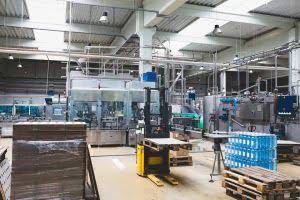6 5 Compare and Contrast Variable and Absorption Costing Principles of Accounting, Volume 2: Managerial Accounting

Understanding these costs is essential for informed decision-making regarding price adjustments and business expenses. By knowing the variable costs, a company can make strategic decisions to enhance its profitability and overall success. If a company has high direct, fixed overhead costs it can make a big impact on the per unit price.
Why blending tech with talent can help CFOs build the ultimate finance team
- Understanding which costs are variable and which costs are fixed are important to business decision-making.
- Instead of focusing on the overhead costs incurred by the product unit, these methods focus on assigning the fixed overhead costs to inventory.
- Effective management involves implementing lean techniques, negotiating with suppliers, optimizing processes, and considering material substitution.
- Practical variable cost examples are crucial for understanding cost analysis.
- Variable costing, also known as direct or marginal costing, is a bookkeeping strategy businesses utilize to manage and analyze costs related to their production forms.
- The accountant’s entire business organization needs to understand that the costing system is created to provide efficiency in assisting in making business decisions.
The absorption cost per unit is the variable cost ($22) plus the per-unit cost of $7 ($49,000/7,000 units) for the fixed overhead, for a total of $29. If companies ramp up production to meet demand, their variable costs will increase as well. If these costs increase at a rate that exceeds the profits generated from new units produced, it may not make sense to expand. A company in such a case will need to evaluate why it cannot achieve economies of scale. In economies of scale, variable costs as a percentage of overall cost per unit decrease as the scale of production ramps up.

Raw Materials
- Therefore, the methods can be reconciled with each other, as shown in Figure 6.17.
- To do this, divide the total variable cost for that category by the number of units produced.
- Absorption costing “absorbs” all of the costs used in manufacturing and includes fixed manufacturing overhead as product costs.
- Identifying these costs is crucial for effective cost control, aiding in managing the overall expense and profitability.
- Variable costing offers several key concepts and highlights, making it an important apparatus for internal decision-making and performance evaluation.
In any case, the variable direct costs and fixed direct costs are subtracted from revenue to arrive at the gross profit. Under variable costing, the fixed overhead is not considered a product cost and would not be assigned to ending inventory. The fixed overhead would have been expensed on the income statement as a period cost. Knowing these costs can help you make more informed decisions in the future. For example, if you decide to double production in July, you can accurately forecast your variable costs to be around $51,000.
Break-even Analysis
In general, it can often be specifically calculated as the sum of the types of variable costs discussed below. Variable costs may need to be allocated across goods if they are incurred in batches (i.e. 100 pounds of raw materials are purchased to manufacture 10,000 finished goods). A cost accounting technique called variable costing allots https://www.bookstime.com/ solely variable production costs to goods or services. The cost of goods sold (COGS) does not include fixed production costs as they are treated as period expenses. By confining and crediting variable costs to products or administrations, variable costing gives a more exact representation of how much it costs to create each unit.
Examples of variable costs for an event
This can fluctuate based on various factors such as the price of raw materials or changes in labor costs. As the production output of cakes increases, the bakery’s variable costs also increase. Variable and fixed costs play into the degree of operating leverage a company has. In short, fixed costs are more risky, generate a greater degree of leverage, and leave the company with greater upside potential. On the other hand, variable costs are safer, generate less leverage, and leave the company with a smaller upside potential. Fixed costs are expenses that remain the same regardless of production output.
Alternatively, advancements in technology or improved procurement strategies might lower the cost per unit, resulting in reduced variable costs. Regularly monitoring and adjusting which group of costs is the most accurate example of variable cost? to these shifts is crucial for maintaining profitability. This, in turn, will raise the cost per unit, leading to higher variable costs for businesses reliant on that material.
Impact on Business Decisions
What’s more, for external reporting purposes, it may be required because it’s the only method that complies with GAAP. Companies may decide that absorption costing alone is more efficient to use. Here’s everything you need to know about fixed vs variable costs, with examples from different industries to help make it stick. Besides these, variable costs impact many other areas related to budgeting and planning, providing essential insights to navigate business uncertainties. For example, if a company produces more goods, variable costs will rise, and if production decreases, so will the variable cost. Freight is another expense not included in the cost of goods sold, but it increases or decreases based on production.

Ask a Financial Professional Any Question
The break-even point determines the level of sales needed to cover all of the costs of production; fixed and variable costs. If a company is at the break-even point, they are neither making nor losing money. It’s impossible to determine accurate pricing for your products without properly calculating variable costs. In order to ensure that your profit margin is adequate and you have the funds available to cover your operating costs, you need to calculate variable costs. While commissions are not included in the cost of goods sold, they are a variable cost that increases or decreases based on production levels. The higher your production levels, the more commissions you should be paying, or your sales staff is not doing its job.
- Conversely, companies with high variable costs will yield lower marginal profits than those with high fixed costs.
- The cost to package or ship a product will only occur if a certain activity is performed.
- Variable costing focuses more on short-term decision-making because it avoids fixed manufacturing costs.
- Because absorption costing defers costs, the ending inventory figure differs from that calculated using the variable costing method.
- Under absorption costing, the 2,000 units in ending inventory include the $1.20 per unit share, or $2,400 of fixed cost.
- An increase in the number of deliveries being made will increase the expense of gasoline, but not the cost of the insurance, depreciation, or loans.
- We’re firm believers in the Golden Rule, which is why editorial opinions are ours alone and have not been previously reviewed, approved, or endorsed by included advertisers.
- For example, managers may have their employees work an extra shift and will then need to pay overtime.
- Up to this point, we have been talking primarily about manufacturing businesses.
- As a company strives to produce more output, it is likely this additional effort will require additional power or energy, resulting in increased variable utility costs.
- Variable costs always vary with production levels, while fixed costs remain the same.
While understanding variable costs is vital, it’s equally essential to be aware of their limitations. These costs have a mix of costs tied to each unit of production and a fixed cost which will be incurred regardless of production volume. For instance, purchasing raw materials in bulk might result in discounts, thereby reducing the cost per unit. Similarly, streamlining production processes can also lead to decreased costs per item. However, anything above this has limitless potential for yielding benefits for the company. Therefore, leverage rewards the company for not choosing variable costs as long as the company can produce enough output.
